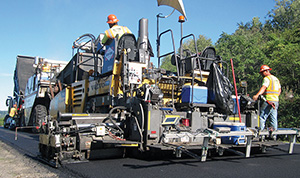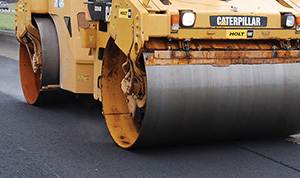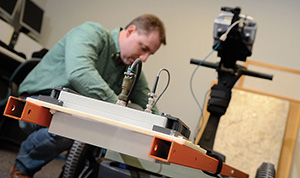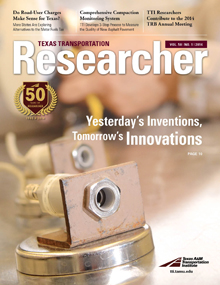Construction defects in new asphalt layers often cause early pavement failures. Imagine a time when these are eliminated.
“I think that time is here,” says Tom Scullion, manager of the Flexible Pavement Program at the Texas A&M Transportation Institute (TTI). Scullion is speaking of a three-step process (detailed in this article) that uses technologies developed at the Institute over the last 5 to 10 years. “There is no question that if these three steps were followed, pavements would last longer, money would be saved, and safety would be improved.”
Individually, each device or technology addresses three components of what is necessary to achieve ideal compaction of the asphalt pavement mat: uniform mat temperature, full compaction coverage and the correct layer density.
Collectively, what Scullion calls the Comprehensive Compaction Monitoring System gives the purchasing agency the confidence of getting a quality mat and that every precaution has been taken to make sure the asphalt will last. “Longer-lasting pavement is what this is about — fewer lane closures for repairs, as well as increased safety for the traveling public and maintenance crews,” he says.
1) PAVE-IR

PAVE-IR is an infrared imaging system mounted on the back of a lay-down machine to ensure that the mat is placed without any cold spots. It consists of a set of 10 temperature sensors mounted on the rear of the paver. The surface temperature of the mat is recorded in real time. Operators know immediately if the temperature falls below the target values, and corrective action can be taken.
“If the mat falls below that level, compaction is not possible,” Scullion points out. “Having the right temperature uniformly throughout the new mat is critical; otherwise, the pavement life span will be shortened.”
PAVE-IR allows for 100 percent of the mat to be tested. After TTI developed the hardware and software, a technology development company built a PAVE-IR prototype and refined it. So far, 50 of the PAVE-IR systems have been sold and are in operation statewide. The Texas Department of Transportation wrote the field specifications, and efforts are under way to introduce PAVE-IR on the national level.
2) INSTRUMENTED ROLLER

Once the asphalt has been laid and the temperatures are right, a steel-wheel breakdown roller is used to compact the mat. It’s a critical element of road construction.
“Much of road construction is done during nighttime hours now, so it’s easy for the roller operators to miss some of the mat,” Scullion says. “We developed a GPS [global positioning system]-based system that is mounted on the roller and a computer monitor display system to show the operator the completed coverage. This is an easy way of permitting the operators to visually determine if they have completed their assigned pattern. During compaction, operators can also now closely monitor asphalt temperatures by viewing a sensor mounted on the equipment.”
Because proper compaction is written into most road construction contracts, Scullion points out that road construction companies, as well as taxpayers, benefit from instrumented rollers.
3) ROLLING DENSITY METER

The final tool developed by TTI researchers is a GPR-based rolling density meter. This device is noncontact and is pushed over the new mat to measure the mat’s density levels in a one-step, real-time procedure.
Until now, density levels were checked by a destructive process that included taking core samples of the road. Not all of the surface could be tested, and the sample areas had to be patched. “The process was less than ideal, so we worked with a GPR manufacturer and told them what we were trying to accomplish,” TTI Associate Research Scientist Stephen Sebesta says. “Eventually, they determined a new nondestructive testing device could be built.”
“The Comprehensive Compaction Monitoring System is a combination of the technologies that have already been field-tested,” Scullion reiterates. “I can see a time in the near future when the system could be required by every department of transportation across the country.”
PAVE-IR and the rolling density meter were ranked this year by the American Association of State Highway and Transportation Officials as the most valuable products of the national Strategic Highway Research Program 2.

